My name is Or-Tal Kiriati and I am an English teacher. I live in Tel-Aviv, Israel.
Today, Thursday, October 12 2023, I am sitting in my study at home. Back from my pilates lesson and a bit of shopping. Preparing for an online lesson with my students, since we can’t meet at school.
There’s a war going on.
At any given minute sirens might be heard and we will be required to go to our shelter for about 10 minutes. Then we come out and all is back to “normal”. This is the Tel Aviv routine these days.
However, my daughter and her husband, who reside in Rehovot, south of Tel Aviv, and doesn’t have a shelter at home, had to leave her house and come stay with us. My son, who lives in Haifa, helped prep the building’s shelter and got to spend some time there too. I am one of those lucky people, who’s immediate family hasn’t been recruited yet, hasn’t been to the Peace party and kidnapped, murdered or maimed.
I slept in my own bed last night. I could take my medications. I had a good dinner and a normal breakfast.
And I am very strong when it comes to repressing the reality.
Keep on reading if you are brave.
I did sleep in my bed, but it took me ages to fall asleep. Repressing isn’t that easy when you’re tired. Kept thinking of the babies kidnapped to Gaza, and the BEHEADED babies and toddlers found in villages and Kibbutz’s in the south. A one year old baby shot in her head. A group of toddlers BOUND AND TIED before they were shot, to scare them even more. These sadistic evil psychopathic terrorists, have been fed and led by people and nations who sit quietly on their oil barrels and European estates, toying not only with their idiot toy terrorists, but toying with the LIVES of the Palestinian people and the Israel Arabs. The Palestinian people has been exploited for 70 years, as my neighbor is saying in this attached video. Want to free Gaza? Free it from the Hamas, Iran, Isis Qatar and the likes of them.
I loved the movie “Coco”. And I fell in love with the concept of the Day of the Dead, as a holiday. For me, Sukkot is a yearly mark for my Day of the Dead. It’s a mix of birthday celebrations and remembering those who are not with us any more. And a family get together brings together our loved ones who join in spirit.
I have a wild imagination and in these family gatherings, I could almost see the three most significant people our family has lost in recent years. My grandmother, who passed away more than 100 years old about 12 years ago. My father, who died surprisingly about 7 years ago, and my dear cousin, Daphna, who was like a sister to me, and died so young about 3 years ago.
Why Sukkot? Ever since I can remember myself Sukkot was an annual must-attend family gathering. It was my Grandma’s birthday. To be joined, later, by two granddaughters” birthdays. Even more a reason to gather and celebrate.
After grandma left us, I thought that keeping this family tradition is the best way to celebrate her life with us. I am sure there’s nothing she would have loved more than seeing the family gather again.
The first holiday after my father’s death was heartbreaking for me. I felt so lonely and sad. Him not being there was a huge hole. But little by little the family being together, created a support like nothing else.
The following gatherings I could “meet” both of them. Feel their presence. Their energy. The same happened after Daphna’s going away. I moved to a new house, and was worried that I might not have this feeling. But they came, my dead loved ones. I felt them with us, last year. They got excited with us for the coming baby. They were a part of the living, just like in the movie.
This year, we can’t have this family meeting. I feel like a good dose of family gathering is desperately needed. But we can’t have it. And so in the last couple of weeks the dead have been in and out of my dreams, thoughts and longings. Because they are a part of me, and my life and the living.
It’s much more than just remembrance. It’s a meeting.
Funny. One of my very first posts on this blog told the story of my youngest son, Yonatan, starting first grade. All the hope, dreams and questions marks that came along his first steps in school, my 3rd time doing these first step with my child.
Well, he graduated! It’s crazy how time flies and I am quite amazed at the fact that this blog exists for so long (even though I haven’t written in it too frequently lately)’.

Yonatan has always been a unique self-learner. For the second half of his last year in high school, he got the COVID closure, which was the best thing that could have happened to him at this timing. Back to the roots. Back to self-teaching.
He definitely didn’t like every topic in school. However, when he got 95 for one of the topics that traditionally was a weak point for him, I couldn’t help but wonder. He had a perfectly good explanation: I found really good and quite interesting summaries online. As for math, for years he got help from a private tutor trying to keep up with the class. Once released from the classroom, he flew into the material, using methods he got from his tutor, and simply expanded and deepened his knowledge, achieving a score of 100.
It’s that freedom from the constraints of the classroom that gave him the greatest boost throughout high school. It makes me wonder how many more students can do it. How many more can benefit from being set free from the 4 walls of the school? What are “we”, as a school-classroom-based education system are doing wrong and how can we make it better?
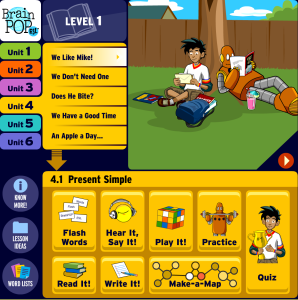 A fan of technology I often look for solutions online for the challenges I meet in class. One of my more exciting discoveries is the simplest tool ever: BrainpopELL.
A fan of technology I often look for solutions online for the challenges I meet in class. One of my more exciting discoveries is the simplest tool ever: BrainpopELL.
I was a bit worried about the childish video clips and how these are going to be accepted by 7th and 8th graders. Those students who have recently graded elementary school and are anxious to seem grown-up. So, I started by introducing the contents of the app and explaining how every lesson corresponds with some grammar topics that we have to learn. I showed them how it has even the most advanced grammar topics that are taught in high school. I explained that the video clips are made to be short, amusing and simple and that they should be understood easily by people of various ages. And then added, that every time they finish a lesson’s quiz with a “10 out of 10” they get the points in their grade book.
Being struggling students, the idea that they can easily get a 10 out of 10 in an English quiz makes it the most appealing opportunity ever. The lesson never revolves around the BrainpopELL app, however, when they finish the class assignments they ask and usually get permission to switch to work on the app. I do my best to avoid homework and discover this is the only thing they might do on their own at home.
The most surprising experience I have had with the app so far was with a dyslexic 14-year-old student, who could barely read his mother tongue of Hebrew and had no knowledge of English at all. I suggested to him to work only with the app and use the listening and speaking plus games. Within less than 6 months of English lessons, 4 hours a week, he could read, write and speak. It wasn’t only the app of course, but this was definitely the kick starter.
You can find links to the apps here: https://ell.brainpop.com/mobile/landing/
By the way, I didn’t get anything from Brainpop in return for this piece. I honestly like it.
What I am missing here in Israel is the ability to monitor users and see how much time each spends on the app, how many times they attempt at the quiz. I would have loved if they did attempt as a more “grown-up” version of video clips too, and my last proposal is to add a video creation tool where the students get to write a script for a new video on the topic they have just learned. This would drive the learning to a whole new level.
If you are an educator interested in a webinar – here’s a recent one:
Yes. They just love the standard lessons. No surprises, please. Don’t get too creative. Don’t expect us to get too creative. The different, the irregular, changes are perceived as threats, scary stuff. It makes us uncomfortable. We love comfortable.
These are my weakest students. They are in 7th and 8th grades. They experienced one type of teaching through elementary school, which obviously didn’t work that well. But still, they would rather keep using the same methods, than be moved out of their familiar zone into experiencing a different type of teaching or learning.
Being a hyper-creative person, it is difficult for me to put aside all the new ideas and methods. But this year I have decided that it would be wiser to start in their comfort zone, so that trust is established before we embark on new ways.
So, we have been working with the textbooks. The students feel composed when they are under the impression that filling the workbooks page by page is what will get them forward and that the road ahead is clear and familiar.
I feel rather sad. There is so much more I want to do. I don’t want them just to get going. I don’t believe that filling up empty spaces in a workbook is learning, and it is certainly not teaching. I want them to feel curious to know more, happy to discover new possibilities and mostly I want them to open up to other ways of learning. Who knows, it might work better. I am getting impatient.
Little by little I seep in some new tastes. Something to soften their attitude towards learning and towards themselves. For instance, I explained that the main factor in their grades is the “test-tube” which is not a test at all. It’s a container where they collect points for every action they do that helps them learn. “Anyone can get 100. If you don’t have enough points, you can always come up with more items, tasks, and missions to add up to 100. 
Still not where I want to be, but a first step in the right direction. They asked me at amazement several times, “Really? Anyone can get 100?”
“Sure”, I said, “Why not?”
Towards the end of the summer vacation, as I was rounding up my plans for my teachings in the coming school year I have decided to dedicate the first month of the year with both my gifted classes to participating in a global project: The Global Goals project.
The month of September is always hectic. The kids are back from vacation with unexpected energy. There are multiple holidays that won’t really let you gather your students to learning, as every day you think about the next vacation. So rather than starting a serious literary unit, I thought that an active project, which requires active research and creative doing, is the best way to start. Now, as we finished this project, I am afraid I won’t live up to expectations for the rest of the year.
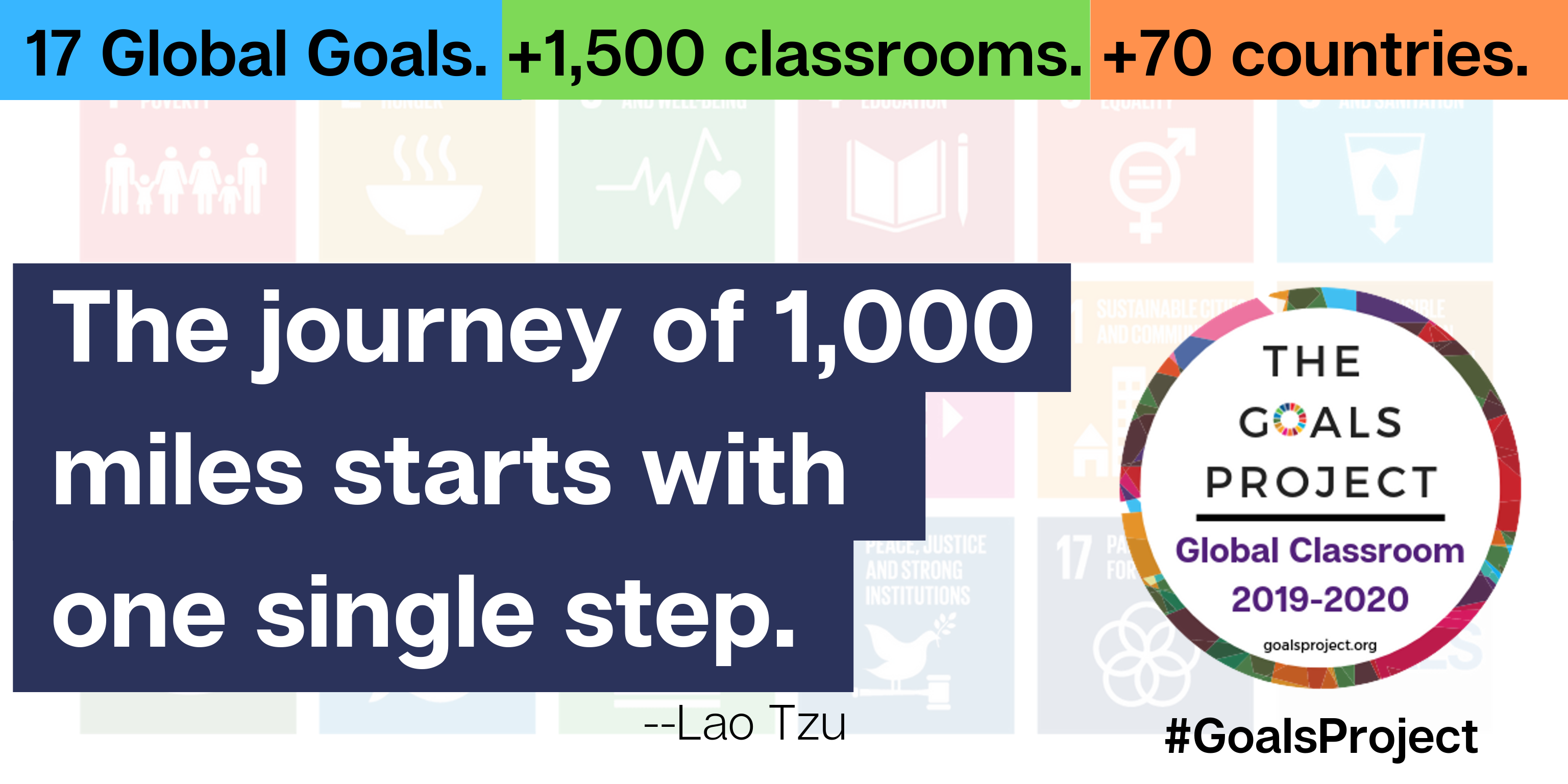
A quick background. I teach English as a foreign language to these 2 classes of gifted students. They are in 8th grade, on average 13-14 years old. We live in Tel-Aviv. The Goals Project is an international project aiming to increase awareness of the UN Sustainable Development Goals: “17 Classrooms working on 17 Goals. Together.” They from groups of 17 classes, sorted into age groups. Within each group, each class gets a goal to research and do a project on. The project starts with introductions by the participating classes and ends with sharing the projects prepared by each class.
At first, when I explained the project to the classes they seemed unsure. But then, we went on Flipboard and browsed together through introductions of classes of all ages, from all over the world. At this point – they got hooked. Their enthusiasm rose as they started to plan and prepare their own video introductions. You can watch them on Flipgrid here and here. This was our Week#1 assignment.
In the second week, the students accepted their goal and started to get to know it. I can’t say there was any English teaching going on. But, oh, so much English learning. The self-driven character of the project was a fantastic hook. They delved into the net to read about it and further their research. They learned many new words, they were exposed to a variety of international topics and found out how these goals are relevant to their lives. They became passionate about this.
The last 2 weeks of the project were dedicated to each class planning and creating their own project, to demonstrate what they learned and share their knowledge, help spread the word and increase awareness. These were the most creative and enthusiastic students you can imagine. I was impressed by how seriously they grasped their assumed responsibility for raising awareness. This did not stop at making a nice project. It had to be perfect. They rechecked their English writing and double-checked each other even before submitting for my inspection. It is international and so has to be respectable.
Each class worked on its own goal, but both classes considered two similar options of a website and a game. In the end I encouraged them to do both, so half the class developed a game, a serious game, and half of the class developed the website.
It was exhilarating for me to see how engaged they were in the work. They skipped recess to continue working and meet the deadlines. They shared their work with me through the holidays just to make sure it is done correctly and in time. And oh! What project! What a learning experience!
I am so proud to present both projects here.
The #SDG17 project is a website and a card game. The card game is based on Quartets. Since the goal is titled “partnerships for the goals” the students designed a quartet game in which you can only win if all goals-sets are achieved, and you can only get there by sharing resource cards. Here is the link to the website. A link to the game is in the website (for download and printing).
The #SDG3 project is a website and a digital game. The website includes an “ideas” section aimed at developing a conversation about the goal and how to help promote it. As they discussed the goal, “Health and well being”, they claimed it sounded utopic and unrealistic. But through research, they discovered so many ways each person can contribute to it and they became encouraged and curious about more ideas. Their serious game concentrated on the issue of vaccines. It takes a humoristic view on the topic but works well in sending a message about the topic. The students created all game elements and graphics on their own and one of the students assumed responsibility on the programming in Construct2.
It’s a chasm between the happy people who can go offline, take a break from work, and the others, who live online, and hardly separate their lives from their careers. Those poor broken people, like me, who developed the online life alongside hightech and startupism.
A huge gap. One of the main differences is the instant ability to create a conversation. As an online person, I can always find online people to talk with and brainstorm with about professional items, revelations, findings, questions, apps and websites, tools and platforms. People who are online and share my passion will always be happy to share and receive. I go on Facebook or Twitter for most of these conversations. I get instant reactions or comments and this feedback is wonderful, as it demonstrates the value of the new shared information. One feels like a valuable part of society, an appreciated contributor to the community.
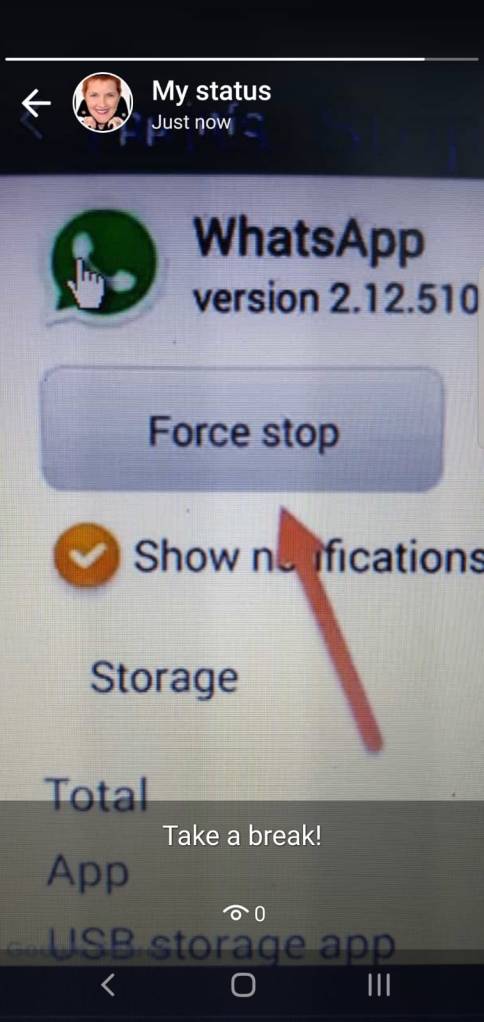
And then, there comes school. With your closest community of teachers. Your co-workers. You want to benefit this private, initial community, first of all, just to discover that – wow! Only in certain hours, please. Don’t share whatever you did or come across as soon as you discover it.
Really? What if I forget later?
I have to draw some conclusions. One is that a career in teaching is demanding enough, way beyond school hours, without me constantly looking for innovations, new solutions, optional pathways. It is so completely different than my previous career in startup: working 24/7. Damaging my sleep cycle. In a constant race to find the solutions or information as soon as possible. Right now! Yesterday!
The second conclusion goes to choosing the right platform for information sharing. Apparently, the teachers’ Whatsapp group is only for sharing jokes, birthday greetings and administrative news. No tools and ideas, please. Email is something most teachers would rather not see at all. There’s the internal school communications system, but archive, sorting, and search aren’t too efficient.
So, if it is not instructional meetings, it should be a dedicated web page.
So coming up next – this web page.
Until that is set, let’s try to make it through a Saturday without work.
As a new school year is about to start I have been planning and preparing some fresh lessons. Since I am not super organized in writing on the board, I really like to use presentations. And yes, while it’s nice to have them on a disk-on-key or downloaded on my laptop, I mostly use online access and Google Slides.
Prezi is another presentation tool I like, but, and this is crucial, it takes way too long to make a great Prezi. It’s more difficult to edit texts, and while the zoom in and out animation is beautiful, the mere fact that you have to consider yet another dimension when you plan and design your presentation makes it more challenging.
So, back to Google Slides. It functions similarly to Microsoft’s PowerPoint. You can find templates or design your own. But the most important factor which I like there is the fonts choice.
True, you can find and download an endless number of fonts to your personal computer, to use in PowerPoint. But Google Slides have great fonts for English language learners, especially those whose mother tongue does not use Latin fonts.
I realized and was quite surprised that it was difficult for ELLs to recognize some letters like “a” and “g” in Arial and Times New Roman. They don’t have the same appearance as they have in writing, which is basically what you teach ELLs. So, Comic is quite a popular font for those reasons exactly, but then it has a problem that the letter “L” and the letter “i” can sometimes look the same. The other problem is the naive, nearly infantile look that renders the text the appearance of something childish or not important. So in Google Slides, I use a font called “Handlee” or the font “Bad Script” which are the clearest and simplest to understand and make out the letters. Both are rather thin. So you can either use Bold or larger font size. “Text Me One” is also an excellent font, and its advantage is that it doesn’t look like handwriting.
The other thing I recommend is using white fonts on a black background. I don’t know if the claim that it is easier for dyslexic kids to read this way is correct, but I decided it’s worth a try. What I discovered in the meantime is that it is easier on the eyes of the students because less light is reflected from the board.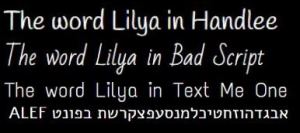
In Hebrew, by the way, I use the font “Alef” which is the clearest and nicest font in Hebrew that Google offers.
I made a conscious choice last year to teach the class for the struggling 7th grade ELL students. Normally, I was told earlier, if you get 1-2 students of the 10-12 students to advance to a higher level ability group – it is considered a success. I got 7 out of 15 to advance, and those who are left with me, are also nowhere near they were when they started the school year.
 Working with this group of students was exhausting and demanding, yet the most important and satisfactory work I have ever done, not only in teaching. I chose this case study as my basis for investigating the factors contributing to success with struggling ELL students. This was my final research project in my studies for my Masters in Teaching degree at Levinsky College, Tel Aviv, one of the leading institutions for teacher education in Israel.
Working with this group of students was exhausting and demanding, yet the most important and satisfactory work I have ever done, not only in teaching. I chose this case study as my basis for investigating the factors contributing to success with struggling ELL students. This was my final research project in my studies for my Masters in Teaching degree at Levinsky College, Tel Aviv, one of the leading institutions for teacher education in Israel.
I think it is important to share my work, and even more important – to continue this research and expand it. I would like to have more teachers like me, and not just in Israel, contributing from their experiences of what works and what doesn’t and why – to generate a living breathing and useful database of actual solutions and real methods for this enormous collection of challenges. Please get in touch if you are interested in joining this initiative.
My project is in English and you can read it here.
Download here: 2019Factors_of_Success_ELL_Struggling_Or-Tal-Kiriati
 Next Wednesday I am flying to Philadelphia! There is a double excitement for me in this long trip from Tel-Aviv: I’ll get to visit my brother and his family who live in Philly, as well as participate in the ISTE annual conference. ISTE is the “International Society for Technology in Education”. The annual ISTE Conference & Expo “serves as a forum for exploring and exchanging ideas about education technology with educators from around the world. The event attracts more than 24,000 educators and education leaders, and includes keynote speakers, hundreds of sessions, and a massive expo where vendors can show off the latest ed tech products and services.” (thank you. Wikipedia). Not used to tooting my own horn, I have to express my appreciation to the organizers of the event for including me in the 200 members leadership events. This made me very happy.
Next Wednesday I am flying to Philadelphia! There is a double excitement for me in this long trip from Tel-Aviv: I’ll get to visit my brother and his family who live in Philly, as well as participate in the ISTE annual conference. ISTE is the “International Society for Technology in Education”. The annual ISTE Conference & Expo “serves as a forum for exploring and exchanging ideas about education technology with educators from around the world. The event attracts more than 24,000 educators and education leaders, and includes keynote speakers, hundreds of sessions, and a massive expo where vendors can show off the latest ed tech products and services.” (thank you. Wikipedia). Not used to tooting my own horn, I have to express my appreciation to the organizers of the event for including me in the 200 members leadership events. This made me very happy.
I’ve been involved in #edtech and innovation in education for more than 15 years now. I manage the EdtechIS group on Facebook and the Edgames Meetup page. Those started when some of my friends said I am posting too many posts about these topics and “not everybody is interested”. Somehow, today, most of the Facebook friends I have are interested in technology and innovation in education.
For those readers who don’t know me, my journey with education started with #edtech and only recently (4 years ago) I joined the ranks of teachers, discovering that this is one of the best things I have done with my life. I am making a much bigger impact as a teacher than I had done when I was the financial reporter of one of the major daily newspapers in Israel, with daily leading headlines. The “doing” is here. The dozens of kids I refer to as “my kids”, whom I love, appreciate, support, push and pull. This is it.
One of the reasons I love so much what I am doing it that I get to innovate all the time. Luckily I found myself working in a junior high and high school (grades 7-12) that values it, encourages and supports it. I enter school every morning into a cloud of smiling teachers. Each is innovating daily in their own way. This last year I have assumed a new role. I am not just teaching English, I am also the director of innovation and technology. Except for setting up a Google Suite for Education for the school, which seemed to me a basic starting point, I have been exploring needs and possibilities and I am planning the professional development I can offer the team next year.
This is why I am so excited to get to #ISTE19.
This week I also had my last day of studies for my Masters of Teaching degree at the Levinsky College for Education in Tel Aviv, which I enjoyed very much. Back to self-teaching now. Some of my professors thought I should consider a doctoral thesis, I said I would rather write a book. If I would, it would probably be digital. Well, #ISTE – here I come!
A sad thing it is, that one of the very first lessons you learn when you enter the education system, is a lesson about exploitation. I fear it is a similar situation in many countries, but that does not minimize the feeling of anger and frustration.
There is so much that parents don’t know about teachers, and the degree of exploitation is one of them. All these negative attitudes I have experienced in the past as a parent must have a lot to do with the fact that teachers feel “if we get the minimum – we will do the minimum”.
So for example, personalized learning?? There is a big difference between preparing one lesson for 30 students, or 20 personalized programs.
Alternative assessments? It’s a lot easier to check one or two standardized tests every semester than to check and re-check personal assignments done individually 1-3 times every week. 60 checks per semester or 120 per week?

I know what it takes to be a good teacher. I know what I need to do, and how. But after receiving my first salary from the Ministry of Education – I am really depressed. The pay does not justify the extra time, extra effort and extra caring and dedication. The pay is an insult which carries a statement: we don’t care about you, teachers. We certainly don’t care about your students. The state of education in Israel is not important. We just hire a few suckers to fill in space in classrooms. When you leave we’ll get some new idealistic idiots. The students will never get to benefit from experienced and devoted teachers. And we, the well-paid ministry clerks and policymakers, we don’t care.
In light of this situation, I consider giving up my position as director of innovation, entrepreneurship and technology. While I have so much to give, and although in the super short time since the beginning of the year I have achieved already incredible achievements, I am going to say “no” to work without compensation. No more volunteering. My work is valuable.
The school year started a month ago, and already we’re counting almost 2 weeks of holiday time. It’s difficult enough to get them going after the summer vacation, but teaching a few days and going off to yet another vacation makes it even harder to start the learning engines, kick this school year off.
But this year is special for me. I got appointed as the school director of innovation and technology, and as such, I get full support for my innovative ideas, tech craze included.
So I started by building a google suite for my school. Single handed I am creating the users, organizational units, groups, team drives, resources with calendars and of course – the google classroom.
Here my students benefit first. I started this year teaching 2 classes of gifted students in 7th grade, and one 8th grade science-oriented classroom, which I also taught last year. All 3 classes received a google classroom right from the beginning of the year and it helped make this month a much more productive one, despite the holidays and traveling families and kids missing school.
So what do I do with the classroom? First of all, I upload all material and worksheets that I hand out in class. This benefits not only those students who have missed classes but also those scatter headed who keep misplacing them.
I add a paragraph or two about what we did in class. Do you know these students who come back from a holiday saying “but we asked, and our friends told us we didn’t miss a thing”. Well, now this line is out. What you have missed is online. Please catch up.
I already posted a few photographs of fantastic group work and class work. I think the students were so immersed in their work, they didn’t even notice I took the pictures. It’s important to reflect, privately within the classroom boundaries, that their English lesson can be a lot of fun and create this warm feeling of a unit working together.
And then, there are the assignments. So I have used several types. Before I go into the types of assignments I have created so far, let me tell you that one other thing I want to promote with my students is social learning. Taking them out of isolation when they work. So I actually suggested they consult with each other on the class stream (the front page). I also asked some students who submitted excellent work to link their work and share it with the classroom so that their peers can see and learn. I find it tremendously important to reduce their dependency on what the teacher is saying.
The first type of assignment is “prepare for our next lesson”. It’s not mandatory. I created vocabulary sets on Quizlet and shared them in the classroom page, offering that the students arrive to class prepared. I know some of them have used them. I hope in the future more students will be aware of their option to prepare for the next lesson. I am actually aiming at a situation in which students will ask me for a preparation task. That is when I know it’s working, and they are learning how to learn.
The second type of assignments is writing assignments. No more papers, please. All assignments are submitted on Google Docs, via the Google Classroom assignment page. I can give them comments and remarks for them to fix, and they can re-submit to get a better grade. The submission date is the deadline, after which they will not be able to improve their grades anymore. I can already see the impact of the re-submission process. My colleagues might think I am crazy for checking so many times the same papers. But it’s not. I use a google doc add-on called “grade proof” to help me quickly detect writing problems. In most cases, re-submit means they went over my comments and solved them. It doesn’t require too long to re-read. For me, not doing this process is the crazy thing. Over the past two weeks, of which more than one week has been a vacation, I can see actual growth and development with those students who keep aiming higher and higher. I actually don’t see the point in giving such assignments without the option to correct oneself and see how your writing improves.
The third type of assignments I tested is reading comprehension – known as “the unseen”. I use readworks.org to assign chosen reading material to the google classroom of my choice. It took me just a bit to get the hang of it. Basically, the students get the passage. I looked for material with “step reading”, meaning they can either read the original article or a simpler version that will make it easier for them. Then they answer questions, some of them are multiple choice and some are written answers. I only have to manually check the written replies to complete their grade for the unseen. I already planned the 2 next assignments on this website. I think it is going to be one of the most useful sites I use.
What else? As always, I used google forms to create a “getting to know you” questionnaire. In the past, I used it for quizzes too, and I have recently learned this feature is even better this year, through google classroom.
I am going to start teaching another class after this holiday. It’s a 7th grade group that has some catching up to do. Most of the students in this class are challenged with ADHD or learning difficulties of sorts, each presents a different challenge. I am planning on creating tiny-groups for them, in Edmodo, because this is a feature not supported by Google classroom. To avoid the hassle of student registration and login I already received excellent help from Edmodo allowing me to bulk import users from our school’s domain. Let’s see how this is going to work. I am also considering using a more gamified environment for this group like Classdojo. I will have to check if it suits them. Some students in 7th grade might consider it childish. It’s a decent platform for badges and rewards, but it will not allow the small group work as Edmodo and I do not want to overload the students with too many platforms. I have tried ClassCraft in the past and I love it. However, to make it work there must be a strong enough WiFi connection in school, and right now, there is none. It’s a totally new building.
And a brand new era for us all.
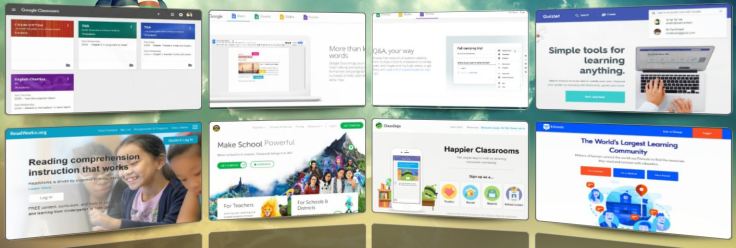
My cousin, Daphna, an amazing woman, sister, friend, kindred spirit, passed away surprisingly last week from an unknown disease, which consumed her within days.
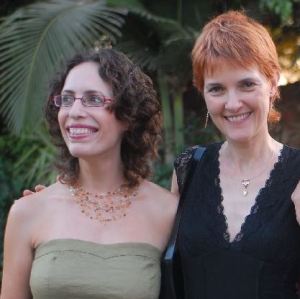
The shock of losing one of my very closest family members, who was younger than me, is mixed in with a level of denial, of the mind’s refusal to accept such a horrid possibility.
When asked, the family immediately consented to organ donation. The surprising fact we have discovered this past week about organ donation is how strangely comforting it is. Initially the feeling that a part of our loved one is still alive in our world. Then that strange sensation of not all is in vain.
There is no end to our sadness and pain. She left a loving husband, 2 daughters and a son. Her parents, my aunt and uncle, who can’t stop crying, and her 2 sisters who were so close. She left a gap in my life and in the lives of so many others, and it was this week we discovered just how many lives she had touched.
May she rest in peace, and we can forever treasure her smiles, her love, kindness and humor.
I am surrounded by a fantastic community of innovative teachers. All are looking for ways to innovate, excite, do things differently, connect and share. It is the most active community I have participated in, and we’re not looking at a single Facebook group – but several.
Here are some interesting discussions randomly picked from today’s Facebook feed:
“I would like to open the new school year with an activity based on a song, video clip or fun presentation – for EFL (English as a Foreign Language) for 7th-8th grade students. Recommendations?”
“This is my first year as a teacher in high school. I will be teaching Math. I am so excited and need help – where do I start? Where can I find relevant materials?”
“Hi guys ![]() Can anyone recommend apps or websites to do online tests ??”
Can anyone recommend apps or websites to do online tests ??”
“Hi all! I’m starting a new job in a couple of weeks and am looking for any ice-breaker strategies you may have for Year 10 and Year 11 students? They were very loyal to their last teacher so I think I might have a struggle! Thanks all.”
“Teachers, here’s a guide for printing a full size poster on your home printer!” (Link in Hebrew).
“metacognition of writing skills : Using https://www.nomoremarking.com/…students compare each others’ work anonymously….some results are very surprising. All you do as a teacher is upload pieces of writing in the system. Students then judge 2 pieces of work at a time and choose which is the best one, and repeat for the next 2 pieces etc… you can add your own model text to ensure they are exposed to an excellent piece. The idea is they discuss what makes a good piece.. I used it with introductions when teaching essay writing, we were surprised to see that the best one didn’t come from our usual best students..you can analyse results, collect data to instruct following teaching…try it! it’s free! and very user friendly ![]() “
“
“Is “drilling” good practice in class? Teacher gives correct answer, pupils repeat as group, individuals repeat, group reinforces whenever the non verbal signal Is given. It was standard practice in Wales, when I trained, but does it aid progress because it helps more naturally inhibited pupils or is it too Pavlovian a practice? I don’t use it much, but significantly some pupils do It automatically. Comments?”
“Hi all, wondering whether anyone has put together a levels grid which encapsulates all 4 core skills? Trying to create something that we can work with effectively in department to replace in part the old national curriculum levels.”
This could go on and on… My point:
This international, cross border communications, advice, sharing, exchanging views and experience is giving a HUGE push to the profession of teaching. Teachers who participate are exposed not only to their own questions or findings, but to infinite amounts of unexpected knowledge and information.
This is SO exciting!!
Still, the majority of teachers in our schools are still left behind when it concerned online communications and social networks. While the connected teachers leap forward and bring the whole concept of teaching into a new era, those who don’t share, who play their cards close to their chest cannot see beyond and into the horizon.
I often meet educators who say “why should I share something I worked on?” – and the answer is simply the whole is bigger and better than its parts – share one and you will gain access to shared works of thousands. It will help you create better materials, it will empower your work and fire your inspiration.
Be a part of this movement to hack education, make it into a new living breathing creature of society.
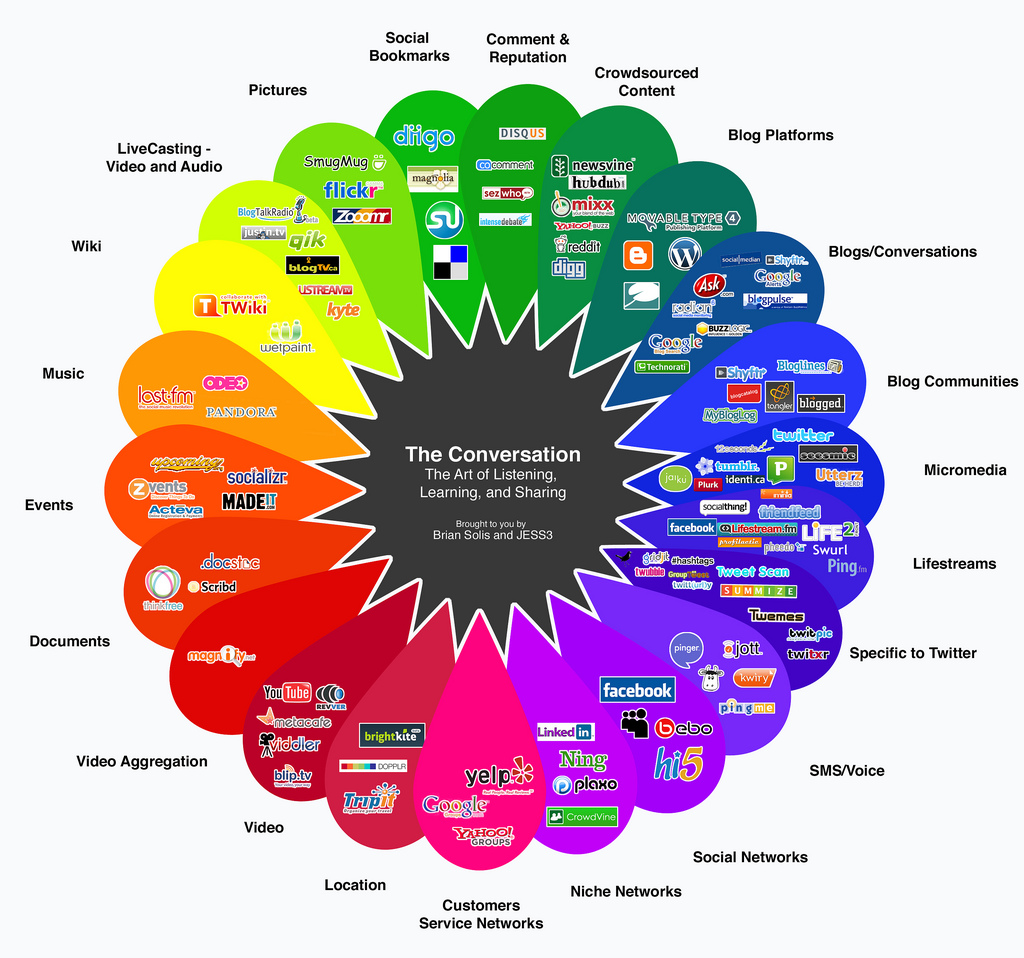
I had no idea I would feel this way. My first year as a teacher ended and I had to say goodbye to my students, my beloved students, because next year I will be teaching in another school. I waited until the very last day to tell them. Their reaction took me by surprise. Boys and girls, 7th grade who came to hug me, or at least shake my hand. Kids telling me they are sorry I won’t teach them next year, and students saying “thank you, you really helped me this year”. One of my students said to me: “Or-Tal, I can tell you this much: if you succeeded in teaching me, you will succeed in teaching anyone”. Which was really moving. I didn’t expect that.
Over the last couple of weeks of the school year it was getting harder and mostly pointless teaching regularly. So, like most teacher I used movies and games during class.
On the last lesson I decided to go for a “BreakoutEdu” concept.
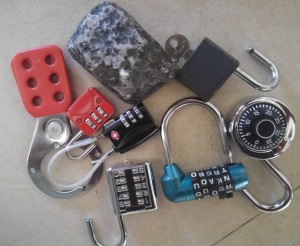
I prepared my box, with 6 locks, with a “treasure” hidden inside, and the riddles and puzzles were a revision on a year’s learning. The students were thrilled to do it. I had them run for clues around the school and school yard and busy solving grammar exercises on their very last lesson of the year.
The treasure chest held mock “flight tickets”, from 7th grade to 8th grade, and a personal “what to pack” list I prepared for each of the students. Ranging from “your sense of humor” to “patience” and more.
I gave the students my email, saying they can always contact me for help, and I am happy to say that about 15% already did that. I just love my students!

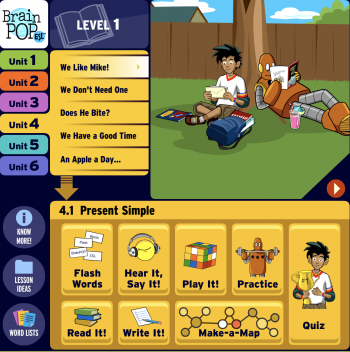

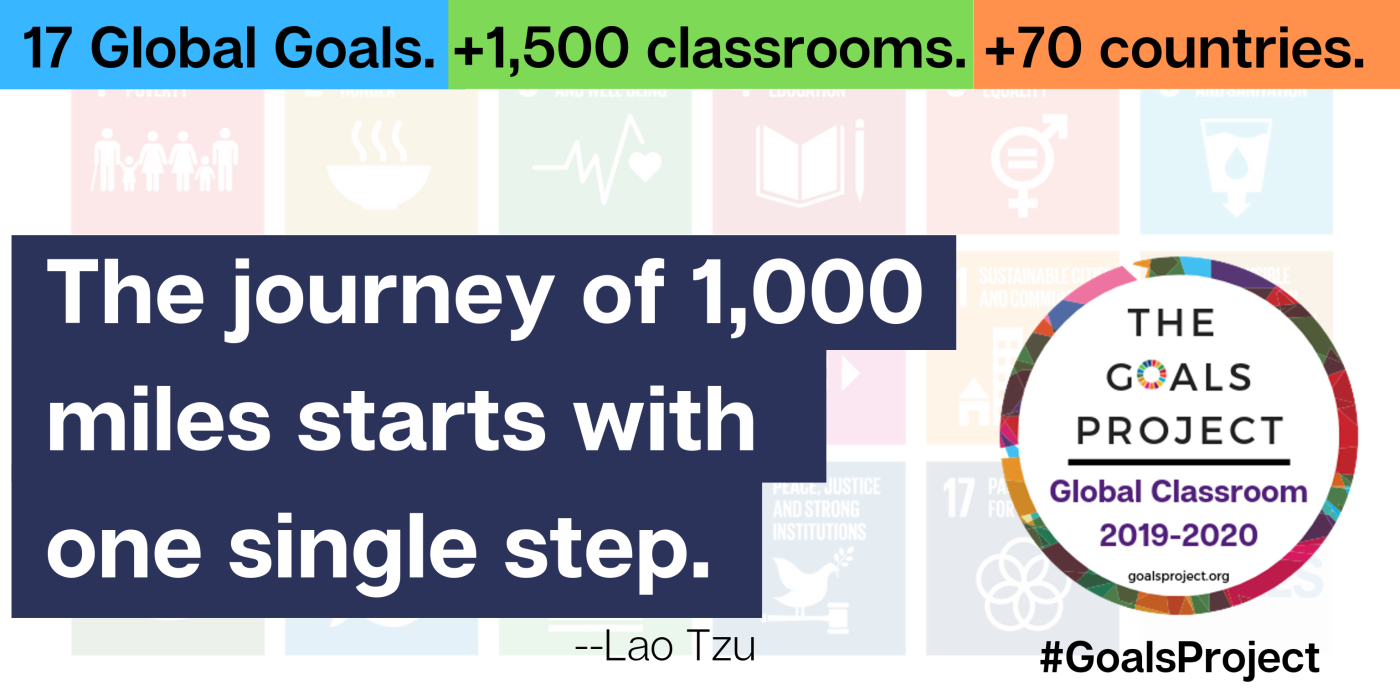

Recent Comments